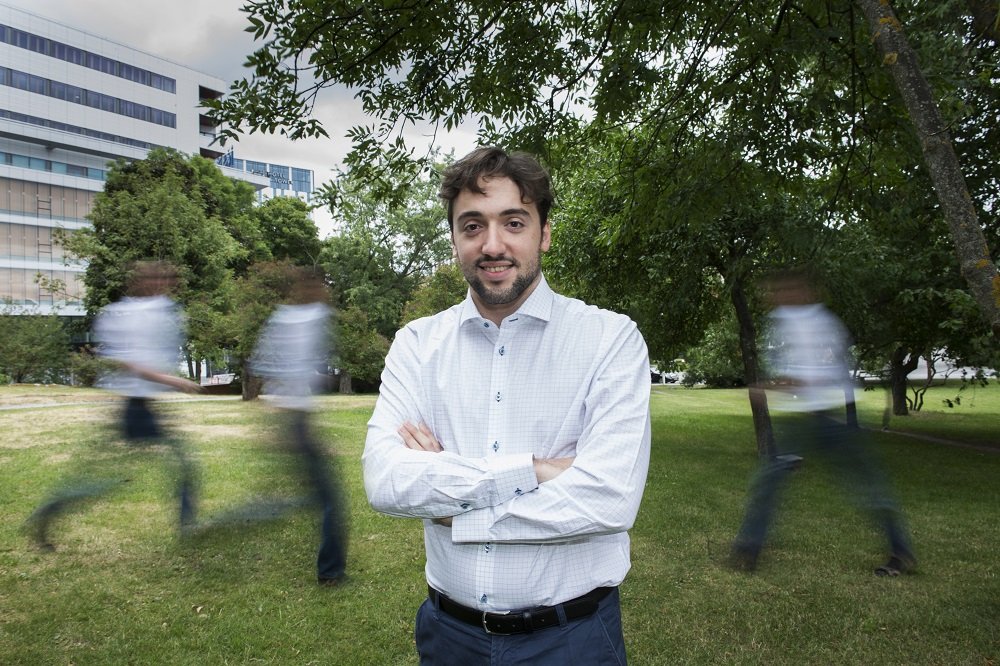New method reveals cell development

Researchers at Karolinska Institutet and Harvard Medical School report in the journal Nature that they have developed a technique for capturing dynamic processes in individual cells. Apart from studying disease processes, the method can be used to observe in detail how specialised cells are formed during embryonic development.
The body is composed of specialised cells that give each organ its unique function. The brain, for instance, is made up of hundreds of different kinds of neurons, while the kidneys have specialised cells for filtering blood and the heart muscle cells have a built-in pacemaker function. Organs are formed as the embryo develops through a process of gradual specialisation. The fertilised egg divides and as more cells are formed they start to take on more specific functions. Similar processes are also found in tumours, which gradually develop into a kind of organ with blood vessels and supporting cells that help the tumour grow.
Difficult to study dynamic processes
What determines the unique function of each cell is the specific genes that are active within it. In neurons, for example, genes are activated that control electrical signals, while muscle cells use genes for motor proteins. In recent years, Swedish and international researchers have developed methods for mapping the cellular composition of complex tissues by studying the gene activity of individual cells. The downside of these methods is that they are destructive. Measuring gene activity of individual cells involves destroying the cells so that their content can be analysed, which makes it difficult to study dynamic processes.
 “It’s like a photograph in which all movement is frozen in time,” explains Professor Sten Linnarsson at the Department of Medical Biochemistry and Biophysics, Karolinska Institutet, and one of the researchers who led the study. “We’ve now developed a new method that measures not only genetic activity but also changes in this activity in individual cells. You can compare this to a photo captured with a long exposure, which results in motion blur: stationary objects are sharp while objects in motion are blurred. Objects moving quickly are blurrier, and the direction of movement is revealed by the direction of blur.”
“It’s like a photograph in which all movement is frozen in time,” explains Professor Sten Linnarsson at the Department of Medical Biochemistry and Biophysics, Karolinska Institutet, and one of the researchers who led the study. “We’ve now developed a new method that measures not only genetic activity but also changes in this activity in individual cells. You can compare this to a photo captured with a long exposure, which results in motion blur: stationary objects are sharp while objects in motion are blurred. Objects moving quickly are blurrier, and the direction of movement is revealed by the direction of blur.”
Method to be used to study tumour formation, wound healing and the immune system
The new method exploits the fact that when genes are activated, a series of RNA molecules are formed in a certain order. By separating out these molecules, the researchers can work out if a gene has just been activated or if, for example, it is about to be switched off.
“This new method allows us to observe in detail how specialised cell types are formed in the embryo, including the human embryo,” says Professor Linnarsson. “It can also be used to study dynamic disease processes, such as tumour formation, wound healing and the immune system.”
The study was conducted in close collaboration with Peter Kharchenko from Harvard Medical School in the USA, and with contributions from several other groups. It was financed with grants from the Swedish Foundation for Strategic Research (SSF), the Knut and Alice Wallenberg Foundation, the Erling-Persson Family Foundation, the Wellcome Trust, the Centre for Innovative Medicine (CIMED), the Swedish Research Council, the European Research Council, the Swedish Brain Fund, the Ming Wai Lau Centre for Reparative Medicine, the Swedish Cancer Society, Karolinska Institutet and the USA’s National Institutes of Health (NIH) and National Science Foundation (NSF).
Publication
“RNA velocity of single cells”
Gioele La Manno, Ruslan Soldatov, Amit Zeisel, Emelie Braun, Hannah Hochgerner, Viktor Petukhov, Katja Lidschreiber, Maria E. Kastriti, Peter Lönnerberg, Alessandro Furlan, Jean Fan, Lars E. Borm, Zehua Liu, David van Bruggen, Jimin Guo, Erik Sundström, Gonçalo Castelo-Branco, Patrick Cramer, Igor Adameyko, Sten Linnarsson, Peter V. Kharchenko. Nature, online Aug 8 2018, doi: 10.1038/s41586-018-0414-6
